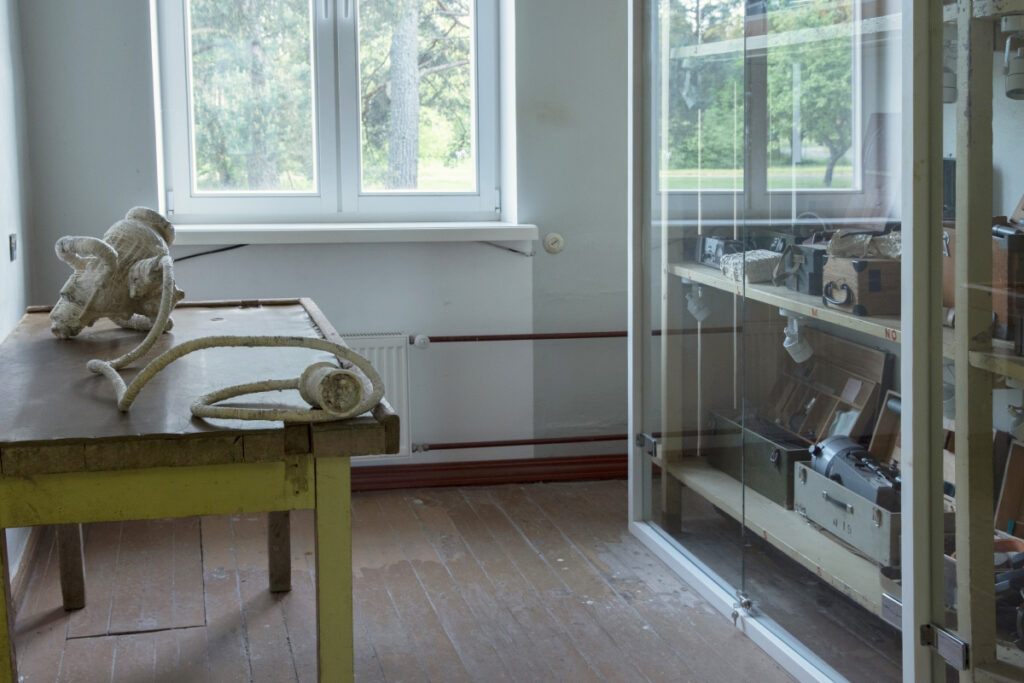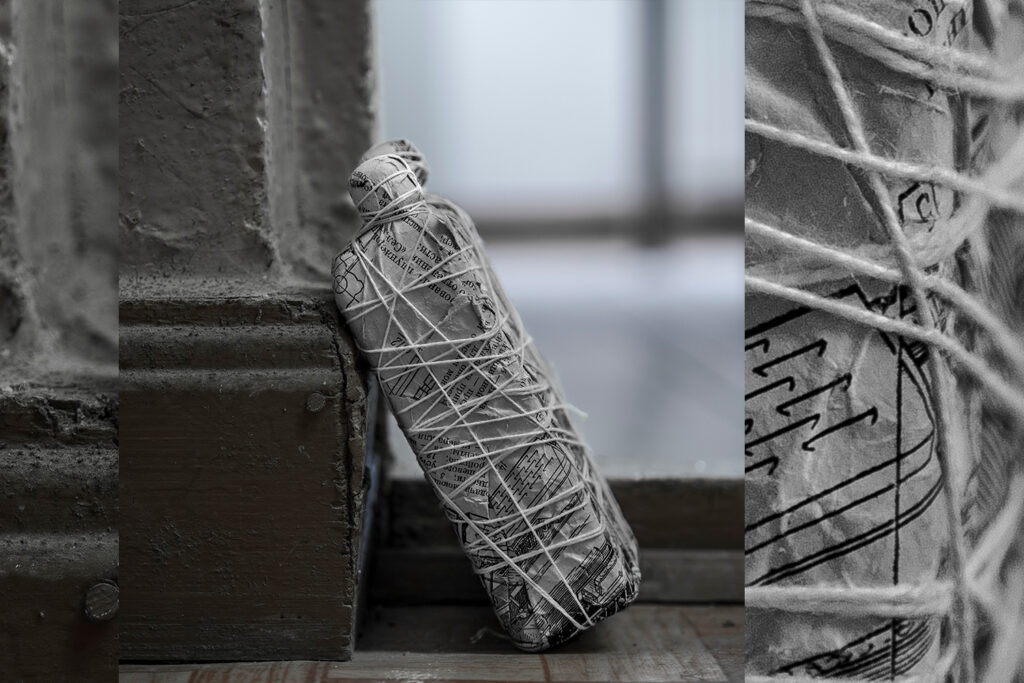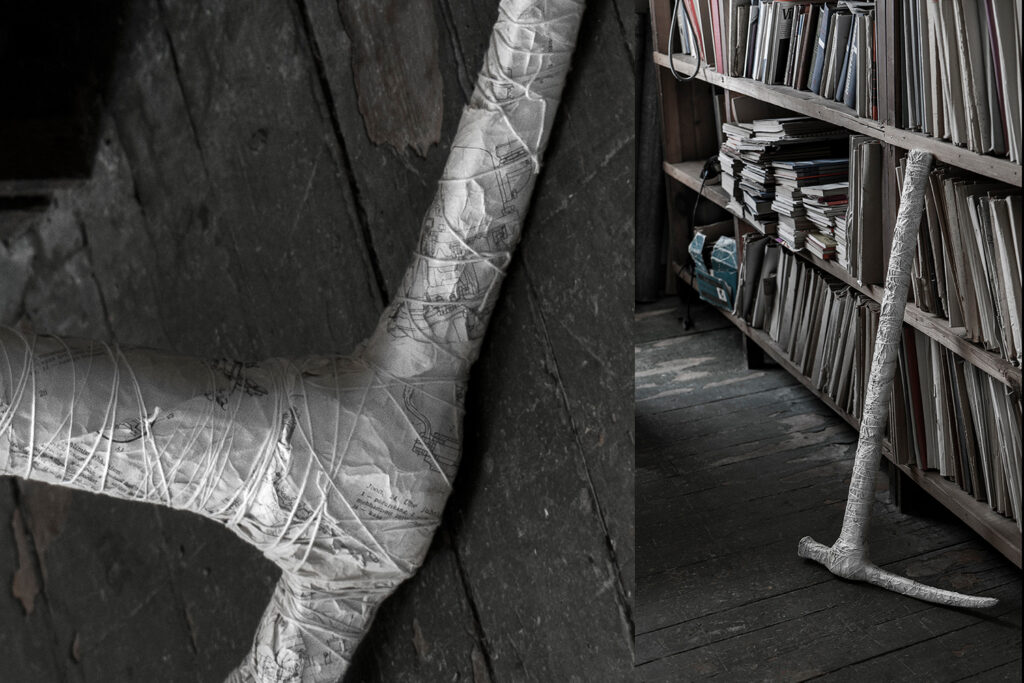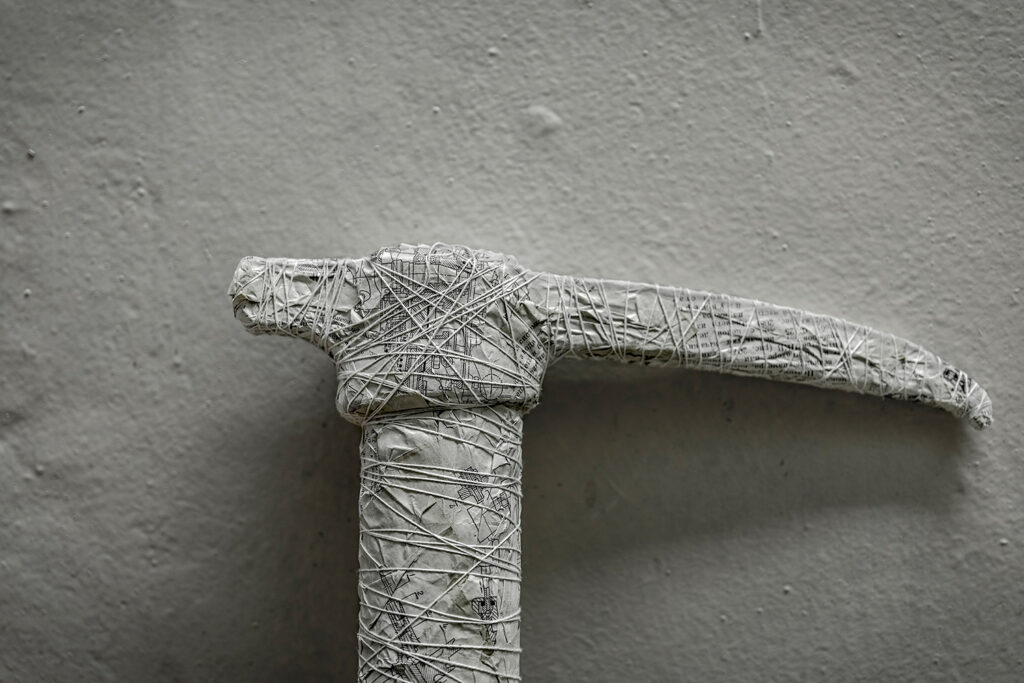17.06.2021
Contemporary art exhibition Kohanemine kahanemisega / Life in Decline / Во время упадка
White building of the Estonian Mining Museum, Kohtla-Nõmme
Participating artists: Anna Shkodenko, Anne Rudanovski, Darja Popolitova, Edith Karlson, Eléonore de Montesquiou, Jevgeni Zolotko, John Grzinich, Laura Kuusk, Sandra Kosorotova, Varvara & Mar
This Thursday, the art exhibition ‘Life in Decline’ opens at the Estonian Mining Museum. For the show, the former administrative building of the Kohtla mine has been intervened to bring forth what goes on in a condition described as ‘in decline’. Ten contemporary artists, who act here as accidental ethnographers, have been invited to engage with a situation in which recovery has not been achieved, yet life continues in the meantime.
The artworks, commissioned especially for this exhibition, engage with the fragility of the things we construct – with special attention to the side-effects of modern extractive industries in Ida-Virumaa. This region stands as a living laboratory where Estonia’s future is at stake, answering to key issues such as the sustainable use of natural resources, social integration, and the maintenance of infrastructures. This exhibition, however, shifts the focus from the region’s current state of social and environmental deterioration to enhancing sustainability through the re-use of disqualified resources.
Curator: Francisco Martínez
Artistic coordinator: Marika Agu
Graphic designer: Viktor Gurov
Technical support: Johannes Säre
Opening performance: Raul Saaremets
Supported by: MOBERC30 Reparare research project, Estonian Cultural Endowment
Partners: Estonian Centre for Contemporary Art
Sponsors: Purtse Brewery and Mimino Georgian Restaurant
https://kaevandusmuuseum.ee/en/24077/
Photo: Laura Kuusk, Anne Rudanovski
_________________________
Installation Aeg töötab // THE WORK OF TIME // Работа времени
Once coming to the end of the corridor, the visitor encounters the archive of the Kohtla mine, a telecommunications room, and a space for storing the measuring technologies of Soviet engineers. However, they all are affected by the work of time, showing a strange, museistic obsolescence. The corridor itself, as an intermediate stage, prepares the visitor for the liminal experience enhanced by the artist. In the rooms, here and there, the visitor can see things that are packed and ready to be sent elsewhen. They are wrapped in pages torn out from old industrial manuals in Estonian and Russian. Still a sharp eye would be capable to read instructions, see drawings, and follow past calculations in the wrinkled surfaces. Some packages are incomprehensibly festive; some others evoke a sense of holiness, or just seem to be abandoned.
[EST] Koridori lõppu sattudes leiab külastaja end silmitsi Kohtla kaevanduse arhiivi, telekommunikatsiooni- ja markšeideri ruumiga. Ruume mõjutab aja töö, mis näitab kummalist, museaalset vananemist. Silma hakkavad siin-seal justkui kusagile ärasaatmiseks pakitud asjad. Need on mähitud nii eesti- kui venekeelsetest vanadest käsiraamatutest rebitud lehtedesse, mille kortsunud pinnalt saab kohati jälgida jooniseid ja mineviku arvutusi, ja suure hoolega nööriga kokku mähitud.
Koridor on kui vahepealsus, millest saab veel minevikku tagasi põigata. Pakkimine juba käib, initsiatsiooniriitus on alanud. Alates arhiiviruumist võib leida üksikuid pakitud objekte, mille pakitud vormist võib aimata suuremaid ja väiksemaid tööriistu, aga ka tundmatuid esemeid. Osaliselt on paberisse mässitud ka ruumielemendid. Selleks on vaja teravat silma, et pakkepaberitelt infot kätte saada, sest osa lehekülgede kortsunud pinnal on trükimusta vähe alles.
Pakitud objektid seiskunud tööruumides tekitavad rahutuse. Mõned pakid on mõistetamatult pidulikud, tekitavad pühalikkuse tunde isegi, teised on justkui hüljatud. Siin-seal on näha raamatutest rebitud ja kokku keeratud iidsete käsikirjadena mõjuvaid nööriga kokku seotud paberirulle.
Objektide kontsentratsioon toimub markšeideri ruumis. Ruumi ühes seinas, üsna akna all, asetseb päevinäinud laud, millel paikneva paberisse mässitud ja nööridega seotud esemel on rõngasse keritud torujas saba, mille ots seob end ei-tea-millega. Nagu end rõngasse kerinud madu...



